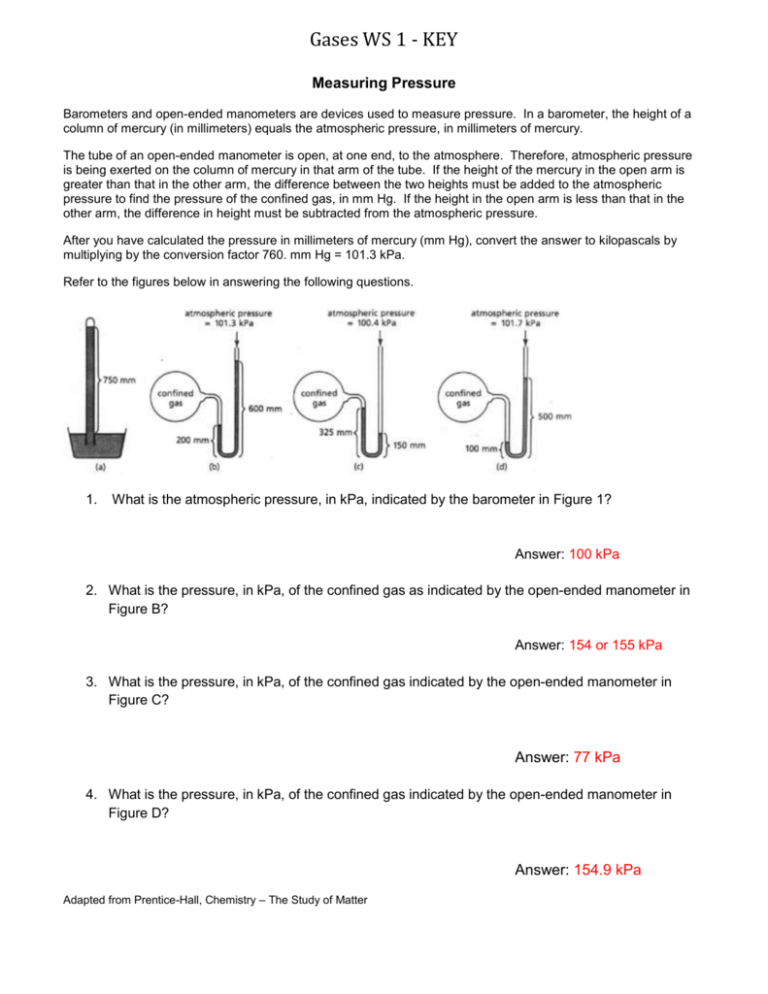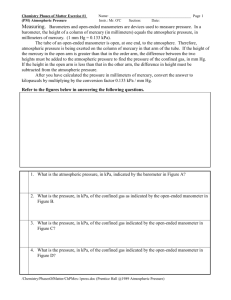Gases WS 1 - KEY - tamhonorschemistryhart
advertisement

Gases WS 1 - KEY Measuring Pressure Barometers and open-ended manometers are devices used to measure pressure. In a barometer, the height of a column of mercury (in millimeters) equals the atmospheric pressure, in millimeters of mercury. The tube of an open-ended manometer is open, at one end, to the atmosphere. Therefore, atmospheric pressure is being exerted on the column of mercury in that arm of the tube. If the height of the mercury in the open arm is greater than that in the other arm, the difference between the two heights must be added to the atmospheric pressure to find the pressure of the confined gas, in mm Hg. If the height in the open arm is less than that in the other arm, the difference in height must be subtracted from the atmospheric pressure. After you have calculated the pressure in millimeters of mercury (mm Hg), convert the answer to kilopascals by multiplying by the conversion factor 760. mm Hg = 101.3 kPa. Refer to the figures below in answering the following questions. 1. What is the atmospheric pressure, in kPa, indicated by the barometer in Figure 1? Answer: 100 kPa 2. What is the pressure, in kPa, of the confined gas as indicated by the open-ended manometer in Figure B? Answer: 154 or 155 kPa 3. What is the pressure, in kPa, of the confined gas indicated by the open-ended manometer in Figure C? Answer: 77 kPa 4. What is the pressure, in kPa, of the confined gas indicated by the open-ended manometer in Figure D? Answer: 154.9 kPa Adapted from Prentice-Hall, Chemistry – The Study of Matter








